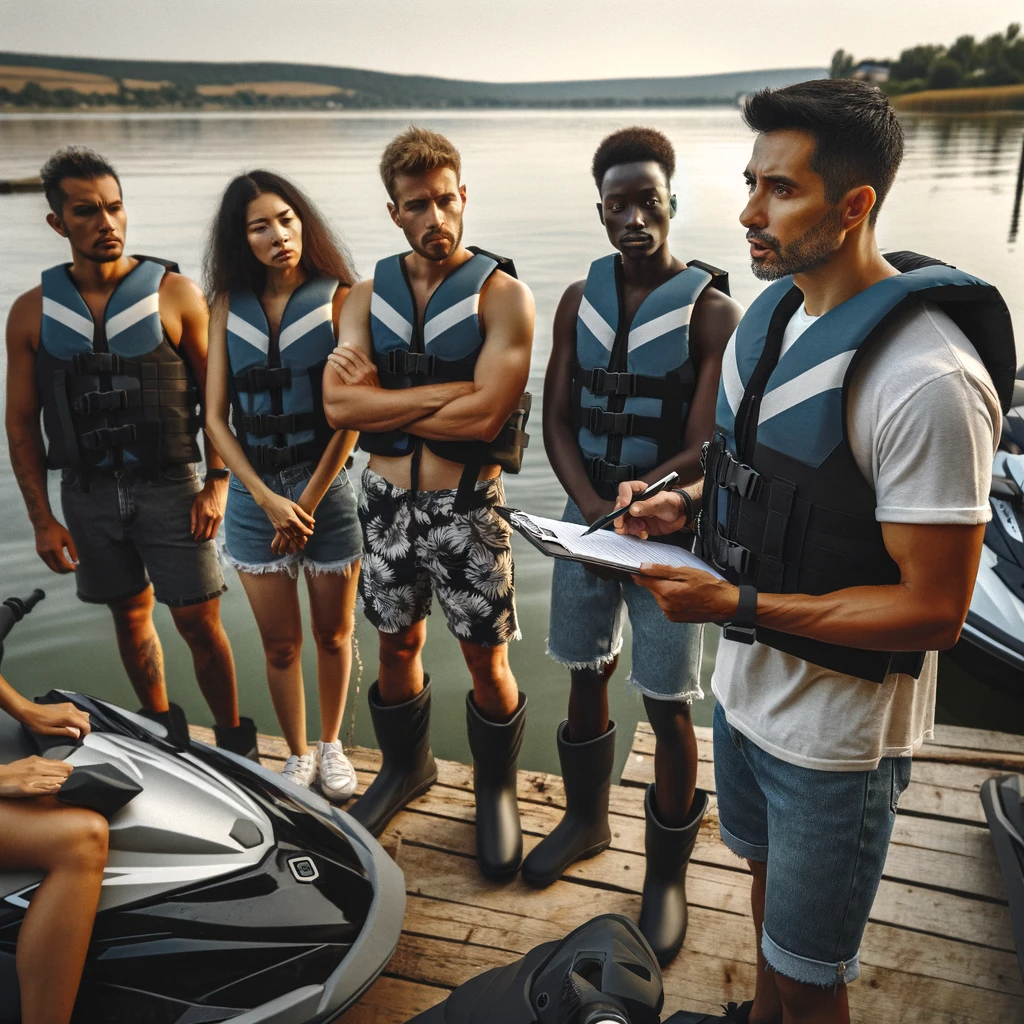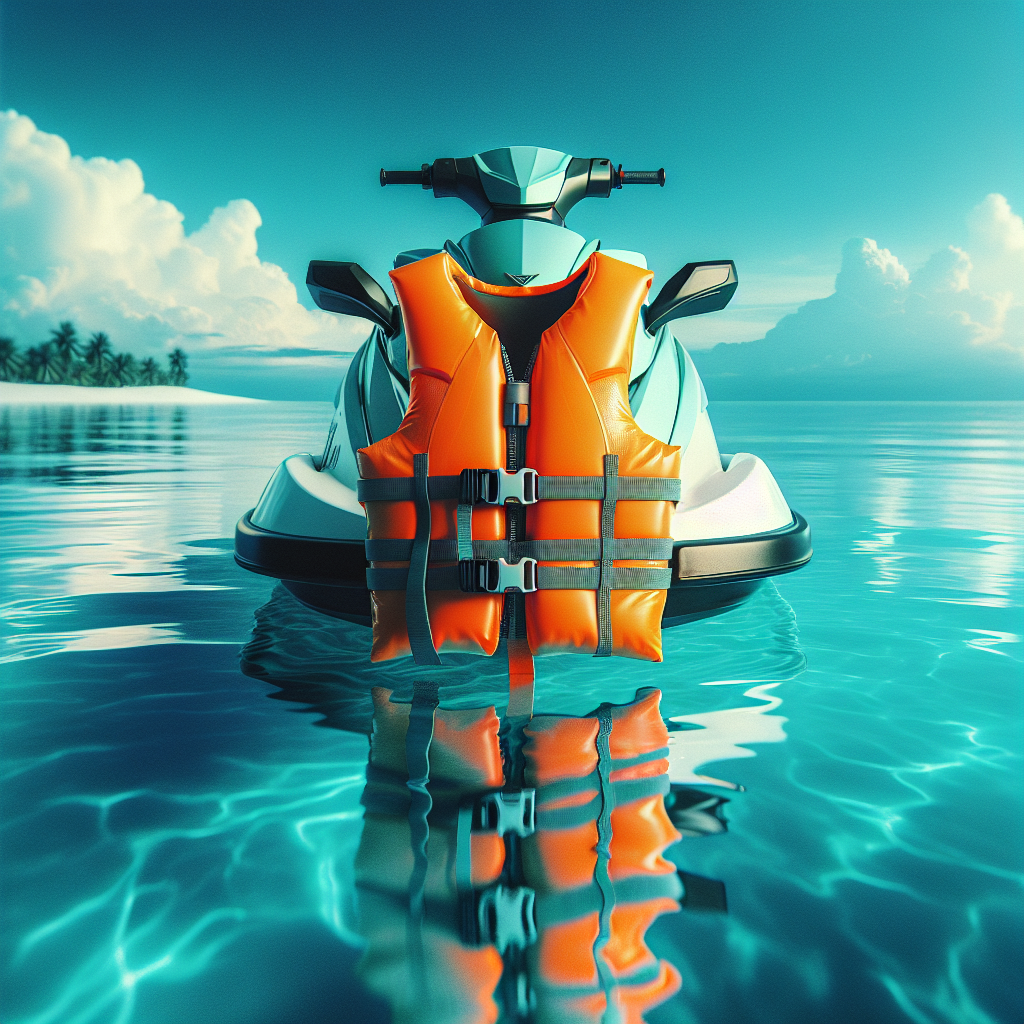Safety training for jet skiers

Looking to take your jet skiing adventures to the next level? Look no further! Safety training for jet skiers is crucial in ensuring a fun and secure experience on the water. Whether you’re a beginner or a seasoned rider, brushing up on safety protocols is always a wise choice. And when it comes to renting a jet ski, why not choose the experts at A2Z Powersport? Located at Fort Morgan Marina in Orange Beach AL, their team offers top-notch safety training alongside quality jet skis for rent. So, get ready to make a splash and enjoy the thrill of jet skiing while being fully prepared with the guidance of the watersport experts at A2Z Powersport.
Jet Skiing Safety Training
Jet skiing can be an exhilarating and enjoyable water sport, but it is essential to prioritize safety while out on the water. Engaging in safety training is of utmost importance to ensure a safe and enjoyable experience. Whether you are a beginner or an experienced rider, proper safety training can equip you with the necessary skills and knowledge to handle various situations that may arise while jet skiing.
Importance of Safety Training
safety training for jet skiers is crucial due to the inherent risks associated with this high-speed water sport. By participating in safety training, you will gain a comprehensive understanding of the necessary precautions, techniques, and equipment required to ensure your safety and the safety of others. These training programs often include instructions on how to handle emergencies, navigate in open water, and abide by waterway regulations, which are vital aspects to focus on to prevent accidents and protect both yourself and others while jet skiing.
Legal Requirements for Safety Training
In many jurisdictions, safety training is not only highly recommended but also legally required for jet skiers. Different areas might have specific regulations regarding the minimum age requirements for operating jet skis and mandatory safety training for riders. It is essential to be aware of these legal requirements to ensure compliance and avoid any penalties or legal issues. Familiarize yourself with the regulations and ensure that you meet all the necessary criteria to operate a jet ski legally.
Certification Programs
To provide jet skiers with comprehensive safety training, certification programs have been established by various organizations. These programs aim to educate riders on safety protocols, handling techniques, and rules and regulations. Organizations such as the National Association of State Boating Law Administrators (NASBLA) offer certification courses that cover a wide range of topics related to jet ski safety. By completing these courses and earning a certification, you can demonstrate your commitment to safety and responsible jet skiing.
Choosing a Reputable Training Provider
When seeking out safety training for jet skiing, it is crucial to choose a reputable training provider. Look for organizations or companies that specialize in water sports safety training and have a proven track record of offering high-quality instruction. A reputable training provider will have experienced instructors who are knowledgeable about jet skis and can effectively communicate safety procedures. Additionally, consider reading reviews and seeking recommendations from other jet ski enthusiasts to ensure that you select a training provider that meets your needs.
Safety Equipment
Using appropriate safety equipment is an essential aspect of jet skiing. Here are some key items that every jet skier should have:
Life Jackets
Wearing a properly fitting life jacket is non-negotiable when participating in any water sport, especially jet skiing. Life jackets are essential for buoyancy and can greatly increase your chances of survival in the event of an accident or a fall into the water. Ensure that your life jacket is Coast Guard approved and suits your weight and body size. Make sure to wear it at all times while operating a jet ski.
Wetsuits
While not mandatory, wearing a wetsuit can provide both protection and insulation while jet skiing. Wetsuits are made from a neoprene material that helps retain body heat and provides a layer of protection against wind and water. If you are riding in colder waters or during cooler seasons, wearing a wetsuit is highly recommended to prevent hypothermia and maintain your body temperature.
Helmets
Although helmets are not as commonly used in jet skiing as in other motorized sports, they are still a valuable safety accessory. Wearing a helmet can protect your head in case of a collision or a fall. Look for helmets specifically designed for water sports with impact-resistant features and a secure fit to ensure maximum protection.
Goggles
Jet skiing can expose your eyes to wind, water spray, and potentially harmful UV rays. Wearing goggles or sunglasses designed for water sports can help protect your eyes from these elements. Look for goggles that are UV resistant, fog-resistant, and provide a secure fit to minimize the risk of the goggles coming off during high-speed maneuvers.
Protective Footwear
Having proper footwear is crucial to protect your feet from any potential injuries while operating a jet ski. Jet ski-specific water shoes or closed-toe athletic shoes are recommended, as they provide grip and protect your feet from any sharp objects or debris in the water. Avoid wearing sandals or flip-flops, as they can easily come off and increase the risk of foot injuries.
Understanding Jet Skis
Before embarking on your jet skiing adventure, it is essential to familiarize yourself with the various aspects of jet skis.
Jet Ski Components
Jet skis consist of several key components that you should understand to operate them safely. These include the handlebars, throttle lever, engine, impeller, and intake grate. Familiarize yourself with the location and function of each of these components through training or by referring to the jet ski’s manual. Understanding these components will enable you to troubleshoot minor issues and ensure the proper functioning of your jet ski.
Jet Ski Controls
Knowing how to control your jet ski is fundamental for safe operation. Key controls include the handlebars, throttle lever, and brakes. The handlebars allow you to steer the jet ski, while the throttle lever controls the engine’s speed. Understanding how these controls work together is crucial for maintaining control and maneuvering your jet ski effectively.
Types of Jet Skis
There are various types of jet skis available, each designed for different purposes and skill levels. Stand-up jet skis are smaller and require riders to stand while operating them, requiring a higher level of skill and balance. Sit-down jet skis are larger and are better suited for beginners or those who prefer a more relaxed riding experience. It is important to choose a jet ski that matches your skill level and riding preferences to ensure a safe and enjoyable experience.
Jet Ski Maintenance and Inspections
Proper maintenance and regular inspections are essential to keep your jet ski in optimal working condition and reduce the risk of mechanical failures while on the water. Routine maintenance tasks include checking fuel levels, inspecting the hull and engine for any damage or leaks, and ensuring all components are functioning correctly. Regularly refer to the manufacturer’s guidelines and recommendations for maintenance intervals and procedures. Additionally, inspect your jet ski before every ride to identify any potential issues that may affect its performance or your safety.
Safe Operating Procedures
To ensure a safe and enjoyable jet skiing experience, it is important to follow these safe operating procedures:
Pre-Ride Inspection
Before launching your jet ski, perform a thorough pre-ride inspection to ensure that it is in proper working order. Check the engine, fuel levels, steering, and the overall condition of the jet ski. Inspect the safety equipment and ensure that you have all the necessary items, such as a life jacket and communication device. Performing this inspection will help identify any potential issues that may affect the performance or safety of your jet ski.
Mounting and Dismounting
Mounting and dismounting your jet ski properly is crucial to prevent injuries or accidents. When mounting, place one foot on the footrest and then swing your other leg over the seat while maintaining balance. When dismounting, be sure to turn off the engine and approach the dock or shore slowly and cautiously. Step off the jet ski and secure it before stepping onto land to ensure a smooth and safe dismount.
Launching and Docking
When launching your jet ski into the water, be mindful of others in the area and follow any designated launch procedures. Always launch your jet ski in a controlled manner, ensuring that it is properly aligned with the water and away from any obstacles. When docking, approach the dock slowly and cautiously, align your jet ski with the docking area, and secure it properly to avoid drift or damage.
Navigating in Open Water
When navigating in open water, be aware of your surroundings and always maintain a safe distance from other watercraft, swimmers, and any potential hazards. Be mindful of your speed and adjust it according to the water and weather conditions. Avoid sudden turns or maneuvers that may destabilize your jet ski or create a safety risk for yourself and others.
Turning and Maneuvering
To execute turns and maneuvers safely, it is important to understand the proper technique. Lean into the turn and use your body weight to shift the weight distribution of the jet ski. Gradually apply throttle and maintain control of the handlebars to guide the jet ski smoothly through the turn. Practicing these techniques in safe and controlled environments can help improve your maneuvering skills and reduce the risk of accidents.
Braking and Stopping
Knowing how to brake and stop your jet ski is essential for maintaining control and avoiding collisions. Most jet skis are equipped with both a throttle lever and a brake lever. To stop or slow down, gradually release the throttle and gently apply the brake. Avoid harsh braking or sudden stops, as they can cause loss of control or even throw you off the jet ski.
Dealing with Emergencies
Despite taking all necessary precautions, emergencies can still occur while jet skiing. It is important to know how to respond to different emergency situations, such as falls, engine failures, or collisions. Safety training programs often cover these scenarios and provide guidance on how to handle them effectively. Remaining calm, following the proper procedures, and seeking assistance when necessary are key elements in managing emergencies while jet skiing.
Awareness of Surroundings
When jet skiing, it is crucial to be aware of your surroundings and adhere to waterway regulations to ensure the safety of yourself and others.
Waterway Regulations
Understanding and following waterway regulations is essential for safe jet skiing. Different areas may have specific rules and regulations dictating speed limits, no-wake zones, and designated areas for various water activities. Familiarize yourself with these regulations before hitting the water and ensure that you comply with them at all times.
Understanding Water Conditions
Being knowledgeable about water conditions can help you make informed decisions regarding your safety while jet skiing. Check the weather forecast before heading out, and be aware of any potential storms or high winds that may make the water conditions unsafe or unfavorable for jet skiing. Additionally, be conscious of currents, tides, and potential hazards such as submerged objects or shallow areas.
Avoiding Collisions
Avoiding collisions with other watercraft, swimmers, or stationary objects is paramount while jet skiing. Always maintain a safe distance from other vessels and give right of way when necessary. Pay attention to navigation markers or buoys that indicate prohibited or restricted areas. By staying alert and aware of your surroundings, you can significantly reduce the risk of collisions.
Interacting with Other Watercraft
Interacting with other watercraft requires cooperation and adherence to boating etiquette. When encountering other boats, jet skis, or watercraft, maintain a safe distance and follow right of way rules. Use appropriate signals or hand gestures to communicate your intentions and navigate safely around other vessels. Be cautious when crossing boat wakes and avoid creating excessive wakes that may endanger smaller vessels.
Respecting Wildlife and Marine Life
While jet skiing, it is essential to respect the natural environment and the wildlife that inhabits it. Avoid disturbing marine animals or birds by maintaining a safe distance and minimizing noise and wake generation. Do not feed or approach wildlife, as this can disrupt their natural behaviors and potentially cause harm to both you and the animals. By being a responsible jet skier, you can help preserve the natural beauty and biodiversity of the areas where you ride.
Weather and Environmental Factors
Being aware of weather conditions and how they can impact your jet skiing experience is crucial for your safety.
Checking Weather Forecasts
Before heading out on the water, always check the weather forecast. Pay attention to any severe weather warnings or advisories that may affect your planned jet skiing activities. Strong winds, thunderstorms, or rough waters can create hazardous conditions, and it is essential to postpone your ride or seek alternative locations if needed.
Understanding Wind and Currents
Wind and currents play a significant role in water conditions. Understanding how wind affects water movement and the potential impact of currents is essential for safe navigation. Wind can create choppy or rough waters, affecting your control and stability on the jet ski. Additionally, currents can impact your speed, direction, and ability to navigate certain areas. Adjust your riding plans accordingly and be prepared for changing conditions caused by wind and currents.
Impact of Weather on Jet Skiing
Weather conditions can have a profound impact on your jet skiing experience. Rain or rough waters can impair visibility and make riding more challenging, while high winds can create rough waves and unstable conditions. Extreme temperatures, either hot or cold, can affect your comfort and safety while jet skiing. Understanding how weather conditions can impact your ride will help you make informed decisions and ensure a safe and enjoyable experience.
Adapting to Changing Conditions
Weather conditions can change rapidly, and it is important to adapt and respond accordingly. If you notice a sudden change in wind speed, water conditions, or visibility, take appropriate action to ensure your safety. This may involve adjusting your speed, seeking shelter, or returning to shore if conditions become unsafe. Always prioritize your well-being and the well-being of those riding with you when faced with changing weather conditions.
Riding Etiquette
Maintaining proper riding etiquette is not only essential for safety but also for maintaining a positive experience for yourself and others enjoying the water.
Maintaining a Safe Distance
Maintaining a safe distance from other vessels, swimmers, and obstacles is crucial to prevent accidents and collisions. Avoid riding too close to other jet skis or boats, as it can create a hazardous situation. Always be aware of your surroundings and adjust your speed and direction accordingly to maintain a safe distance from other watercraft.
Speed Limits and No-Wake Zones
Respecting speed limits and adhering to designated no-wake zones is vital for the safety of everyone on the water. Speed limits are implemented to ensure safe operation and prevent excessive wakes. Slow down and idle in no-wake zones to minimize the risk of causing damage to other vessels and reduce the potential for accidents.
Right of Way Rules
Understanding and adhering to right of way rules is crucial for safe navigation and avoiding collisions. Familiarize yourself with the rules and regulations regarding right of way in your area. Always yield to larger vessels and boats constrained by their draft and give way to vessels on your starboard side. By following these rules, you can minimize the risk of accidents and create a harmonious environment on the water.
Respecting Private Property
Respecting private property is essential while jet skiing. Avoid trespassing or encroaching on private property, including docks, piers, and marinas. Be mindful of posted signs or barriers that indicate restricted areas or no-entry zones. Always ride in designated areas to ensure the privacy and safety of others.
Environmental Protection
As jet skiers, it is our responsibility to protect and preserve the natural environment and waterways we enjoy. Avoid fuel spills or any other waste that may harm the ecosystem. Dispose of any trash or debris properly and leave the area as clean or cleaner than when you arrived. By being mindful of your impact on the environment, you can contribute to the sustainability and longevity of the waterways for future generations.
Emergency Preparedness
While we hope for safe and incident-free rides, it is crucial to be prepared for emergencies and equipped with the necessary knowledge and tools to handle them.
Being Prepared for Accidents
Accidents can happen, even to the most experienced jet skiers. It is important to be mentally and physically prepared should anything go wrong. Before heading out, ensure that you have a basic understanding of first aid techniques, know how to handle injuries, and have a well-stocked first aid kit on your jet ski. Additionally, carry emergency contact information, including the nearest hospitals or medical facilities, to seek immediate assistance if needed.
Proper Use of Communication Devices
Communication devices such as marine radios or waterproof cell phones can be lifesaving in emergency situations. Familiarize yourself with how to operate these devices and ensure they are fully charged before each ride. In the event of an emergency, use these devices to call for help and provide accurate information about your location and situation.
Basic First Aid
Knowing basic first aid techniques can make a significant difference in an emergency situation. Take the time to educate yourself on basic first aid procedures, such as CPR, treating burns, or managing fractures. This knowledge can help you provide immediate care to yourself or others until professional medical help arrives.
Rescuing Techniques
Having the skills to perform rescues in the water is crucial as a responsible jet skier. Learn and practice proper rescue techniques, such as how to approach and assist someone in distress, how to create flotation devices, and how to tow someone behind your jet ski safely. Understanding these techniques and being prepared to assist others can make a significant impact on the outcome of an emergency situation.
Jet Skiing Laws and Regulations
Every jurisdiction has laws and regulations governing jet skiing to ensure safety and proper use of waterways. Familiarize yourself with the laws and regulations in your area to avoid any legal issues and protect yourself and others.
Minimum Age Requirements
Most jurisdictions have minimum age requirements for operating a jet ski. These age restrictions are in place to ensure that riders have the physical and mental capacity to safely handle a jet ski. Be aware of the minimum age requirements in your area and ensure that you meet them before operating a jet ski.
Licensing and Registration
Many jurisdictions require jet skis to be registered and operators to obtain a valid license. These requirements vary from one area to another, so it is crucial to research and comply with the specific regulations in your location. Obtain the necessary licenses and complete the registration process to ensure that you are operating your jet ski legally.
Speed Limits and No-Wake Zones
Speed limits and no-wake zones are established to ensure the safety of all waterway users. Familiarize yourself with the designated speed limits in your area and adhere to them at all times. Additionally, be aware of the locations of no-wake zones and their specific requirements. Compliance with these speed and wake regulations is essential for preventing accidents and maintaining a safe boating environment.
Alcohol and Drug Restrictions
Operating a jet ski while under the influence of alcohol or drugs is not only dangerous but also illegal in most jurisdictions. Alcohol and drugs impair judgment, coordination, and reaction time, increasing the risk of accidents and injuries. Understand the laws and regulations regarding alcohol and drug use while operating a jet ski and always ride sober to ensure your safety and the safety of others.
Environmental Regulations
To protect the environment and maintain the natural beauty of waterways, many jurisdictions have implemented specific regulations related to jet skiing. These regulations may include restrictions on fuel spills, noise levels, and the preservation of sensitive wildlife habitats. Familiarize yourself with these regulations and proactively contribute to the preservation of the environment while enjoying your jet skiing activities.
Safety Tips and Best Practices
Here are some additional safety tips and best practices to ensure a safe and enjoyable jet skiing experience:
Always Wear a Life Jacket
Wearing a life jacket is the single most important safety measure you can take while jet skiing. Choose a life jacket that fits properly and is designed specifically for water sports. Always wear your life jacket, even if you are a strong swimmer, as it can greatly increase your chances of survival in the event of an accident or unexpected fall.
Observe Safety Signage
Pay attention to safety signage and navigational markers posted in the water. These signs provide important information regarding speed limits, no-wake zones, and potential hazards. Always obey the instructions indicated on the signs and adjust your behavior accordingly.
Avoid Reckless Behavior
Reckless behavior, such as excessive speeding, weaving through traffic, or jumping wakes, can lead to accidents or collisions. Always operate your jet ski in a responsible manner, respecting the safety of others on the water. Keep in mind that reckless behavior not only puts yourself at risk but also endangers the lives of others.
Stay Sober and Alert
Operating a jet ski requires focus and attention. Always ride with a clear mind and avoid alcohol or any substances that can impair your judgment or coordination. Maintain alertness at all times, scanning the water for potential hazards, and staying aware of your surroundings.
Take Breaks and Rest
Jet skiing can be physically demanding, especially if you are riding for extended periods. Take regular breaks to rest, rehydrate, and refuel. Fatigue can impair your judgment and coordination, increasing the risk of accidents. Listen to your body and know your limits.
Maintain Proper Maintenance
Regularly inspect and maintain your jet ski to ensure its optimal performance and reliability. Follow the manufacturer’s recommended maintenance schedule, including routine checks of engines, fuel systems, and other components. proper maintenance will reduce the risk of mechanical failures and increase your safety while on the water.
Stay Informed of Updated Regulations
Regulations regarding jet skiing may change over time, so it is important to stay informed of any updates or revisions. Be proactive in keeping up to date with new laws and regulations in your area. This can involve regularly checking official websites, attending safety seminars, or staying connected with local boating communities. By staying informed, you can ensure that you are operating your jet ski in compliance with the latest safety guidelines.
In conclusion, jet skiing can be an exhilarating and enjoyable water sport when practiced with a strong emphasis on safety. Engaging in safety training, adhering to regulations, using appropriate safety equipment, and displaying responsible behavior are essential for a safe and enjoyable experience. By following these guidelines, you can become a responsible jet skier and contribute to the well-being of yourself, other waterway users, and the environment. Remember to choose a reputable training provider for your safety training needs, and consider renting jet skis from trusted watersport experts like A2Z Powersport located in Orange Beach, AL, at the Fort Morgan Marina. Happy and safe jet skiing!










